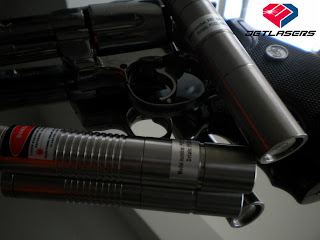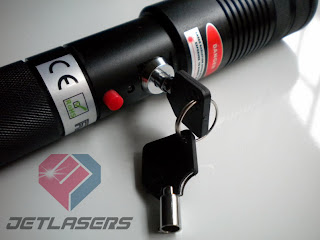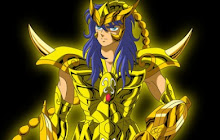 I guess it would be safe to say that more countries in the world follow soccer than any other sport in the world. Mostly because soccer is one of the simplest games in the world to understand as well as to play. Soccer also requires very little equipment, so all you need to do is to pop out on to the field with a bunch of friends and start playing! But before you start, and assuming that you do not know the game, it would be a pretty good idea for you to go through these basic soccer terms, the meaning of which any footballer ought to know about! So, here are some of the basic soccer terms and rules explained.Instead of clumping all the soccer terms together, in this article, I will be classifying them into the following categories which I feel they belong to.
I guess it would be safe to say that more countries in the world follow soccer than any other sport in the world. Mostly because soccer is one of the simplest games in the world to understand as well as to play. Soccer also requires very little equipment, so all you need to do is to pop out on to the field with a bunch of friends and start playing! But before you start, and assuming that you do not know the game, it would be a pretty good idea for you to go through these basic soccer terms, the meaning of which any footballer ought to know about! So, here are some of the basic soccer terms and rules explained.Instead of clumping all the soccer terms together, in this article, I will be classifying them into the following categories which I feel they belong to.
Soccer Terms Related to Player Positions
Soccer Terms Related to Player Formation
Soccer Terms Related to Pitch Dimensions
Other Basic Soccer Terms And Rules
Soccer Terms Related to Player PositionsGoalkeeperThe goalkeeper is the player in soccer who guards the goal. The goalkeeper is also the only player on the pitch who is allowed to touch the ball with his hands in the penalty area. DefendersDefenders are the players who are basically responsible for stopping the opposition team from scoring. Defenders are usually split into center backs and full backs.Full-backsFull-backs or wing-backs are players that play on the right and left flanks of the defense. They generally are entrusted with two tasks. The first is to ensure that the attacking players from the wide ends of the pitch are dealt with and the second is to bring the ball forward to facilitate attacking play. The right-back is the full back who plays on the right of the two center-backs and the left back plays on the left of the two center-backs.Center-backsCenter-backs or center-halves or central defenders generally form the heart of the defense. They are positioned in the center of the defense line and they are given the task of stopping the opposition attackers from running at the goal and scoring. Most teams today play with two center-backs, although there was a time when the just the one center-back (then known as a 'sweeper').MidfieldersThe midfielders are the players that play in the center of the field between the defense and the attack. The midfielder was traditionally entrusted with the task of bringing the ball from the defense and passing it to the attacking players. Midfielders are further classified according to their specific functions as defensive midfielders. Attacking midfielders, wingers and playmakers.Defensive MidfieldersDefensive midfielders act as a screen for the defenders. Defensive midfielders generally operate in the center of the pitch and tackle the opposition attacking players. The role of the defensive midfielder has grown into prominence of late and they operate as a back up to the defense.Attacking MidfieldersAttacking midfielders generally come forward from the midfield and assist the strikers and help them score goals. Attacking midfielders generally take the pass from the defensive midfielders and pass it to the strikers.WingersWingers are those players in the midfield line that play on the right and left ends of the pitch. Wingers generally bring the ball forward from the defense and either cross it into the path of the attacking players or run into the center, towards the goal.PlaymakerFew teams are lucky enough to have an efficient playmaker. A playmaker is the one that plays as an attacking midfielder, but has the vision and ability to understand and control the tempo of the game and helps the team by making important assists to the team's attacking players. The playmaker generally holds the ball forward and dictates the flow of the game.Inside ForwardThe traditional inside forward is on the wane now. The inside forward was the player generally stationed between the strikers and the midfielder.StrikerThe striker is the player employed by the team to go forward and score goals. A striker has to big all and fast and ought to be a good header of the ball.Soccer Terms Related to Player Formation3-5-2The 3-5-2 is one of the older formations that is very rarely used these days. In a 3-5-2, the team played with just the one center-back (sweeper), two full-backs, five midfielders and 2 strikers.4-4-2The 4-4-2 is perhaps the most common formation seen in football today and is widely followed basically because of its tactical simplicity. The 4-4-2 has two center-backs and and two full-backs in the defense, four midfielder of which one or two may be defensive midfielders and the rest are attacking midfielders and two strikers.4-3-3The 4-3-3 is generally seen as an aggressive and attacking formation. There are several different ways of playing out the 4-3-3 formation. Either way, the defense is composed the same way as it is in the 4-4-2. The 4-3-3 has three midfielders of which only one or all three may be played defensively. The three forward players can be arranged with two strikers and one playmaker behind them or with one striker and two attacking midfielders behind him.4-3-2-1The 4-3-2-1 or the pyramid formation is again a very rarely used formation owing to its 'narrowness'. The 4-3-2-1 has the usual four defenders, three defensive midfielders, two attacking midfielders and one striker. It is a narrow formation as there are no real out and out wingers to man the flanks and hence the full-backs are expected to get forward and cover the area on the wings.4-2-3-1Less narrow and more balanced than the 4-3-2-1 is the 4-2-3-1, which gives a bit more width as it stars three attacking midfielders and two defensive ones. But having two defensive midfielders can sometimes slow the tempo of the game down and make it far too defensive and really bottle up the goals.4-2-1-2-1Or quite simply, the 'diamond' is an effective enough formation although narrow and relatively less popular. The 4-2-1-2-1 has a diamond at the front with one striker at the front tip, two more strikers behind him, and one playmaker behind the two second strikers at the lower tip of the diamond. Two defensive midfielders play behind the diamond.W-MKnown as the W-M because if the formation was drawn on the pitch it would look like the players are arranged as the two letters. The W-M has three strikers, two attacking midfielders, two more midfielders just behind them, and 3 defenders. The W-M is now almost completely been discontinued.CatenaccioIf you look it up in a dictionary, it vaguely means 'door-bolt'. The catenaccio is a formation which we can call a 5-4-2 and uses five defenders. It is knows the door bolt as the door to the goal is rammed shut by the five defenders. The catenaccio again is a very sparingly used formation.Soccer Terms Related to Pitch DimensionsCenter LineThe center line is a line drawn across the pitch which divides its length into two equal halves.Center SpotThe center spot is the spot at the center of the center line and is the spot from which the teams kick off at the start of either half of the game or once a goal has been scored.Corner ArcThe corner arc is the demarcated area on the corners of the pitch from within which the corners can be taken.Penalty AreaThe penalty area is a rectangular area in front of the goal where, if a foul is made by the team defending that goal, it will lead to a penalty kick for the opposition team. The penalty area is also the only part of the pitch within which the goalkeeper is allowed to touch the ball with his hands.Penalty SpotThe penalty spot is a spot in front of the goal from which the penalty kick is taken.Read on for more information on soccer.
Soccer Field Dimensions
Soccer Field Layout
Other Basic Soccer Terms and RulesGoalUndoubtedly the most important part of the game is the goal. A team is said to have scored a goal when they successfully advance the ball forward into the opposition's area and shoot the ball into the area marked as the goal. The team which has scored the maximum number of goals by the end of the game wins.FoulA foul is generally a move deemed illegal by the referee. Common fouls include handling the ball, injuring or trying to injure an opposition player in an attempt to take the ball away from him.Corner KickA team is awarded a corner kick when a player of the opposition team hits the ball out behind the goal that his team are defending. Hitting the ball behind the opposition's goal does not lead to a corner kick. A corner kick is taken from the corner arc.Free KickA free kick is a kick taken by the player of a team which has been fouled. The opposition players aren't allowed to obstruct the player taking a free kick. The free kick need not be taken by the player who has been fouled and can be taken by any person from the team of the player who has been fouled.Penalty KickWhen a foul is made by a player in his penalty area (the area around the goal his team is defending), especially when the opposition player had a clear goal-scoring opportunity, a penalty kick is given. The penalty kick is taken directly from the penalty spot and no one other than the goalkeeper is allowed to defend it. The penalty kick need not be taken by the player who has been fouled and can be taken by any player from the team.CautionIf the referee sees a player making too many fouls, the referee has to ensure that the player is cautioned. Ignoring the caution and continuing to make fouls results in a yellow or red card depending on the nature of the foul.Yellow CardThe yellow card is given by the referee to a player as a caution for a foul deemed to be serious by the referee. A player receiving two yellow cards in one game is given a red card and sent off and will no longer be allowed to participate in the game.Red CardThe red card is given by the referee either after two yellow cards in one game or if the referee deems a foul so serious that a red card is the commensurate punishment. A 'straight red' (no yellow cards) is given when a player denies an opposition player a goal-scoring opportunity in the penalty area by committing a foul. A player receiving a red card either directly or as a result of two yellow cards is 'sent off' and is no longer allowed to participate in the game. The team whose player is sent off has to play with one player less.AssistThe assist is the last pass made by a player before the goal is scored. PossessionA player who has the ball is said to be in possession of the ball.HeaderA header is when the player touches the ball with his head.TackleA tackle is when a player makes an effort to get the ball from a player who has possession.CapThe number of caps a player has is the number of times a player has represented his club/country.CrossA cross is a pass made from one wing of the pitch towards the other side.Extra TimeWhen the score is level for a knockout game (not a league game), two halves of 15 minutes each are added as extra time. If the scores are still level at the end of extra time, the game goes into a penalty shootout.FormationA formation is a shape in which the players of one team are arranged.Half-TimeHalf time is a break which separates the first half of 45 minutes from the second half of 45 minutes.Hand ballWhen a player touches the ball with his hands, it is called a handball.Hat-TrickA player is said to score a hat-trick when he scores three goals in one game.Injury TimeInjury time/Stoppage Time/Time Added On is the time added at the end of each half to account for stoppages in play due to injuries, fouls etc.KickoffKickoff marks the start of a game.OffsideA player is said to be offside when he is closer to the opposition's goal than the opposition defenders, when the team mate of the former passes the ball to him.Penalty ShootoutIf in a knockout game, the scores of both teams are still tied, there is a penalty shootout where each team is given five penalty shots. The team that scores more penalties, wins.RefereeThe referee is the person employed to watch over the game and ensure that the game is played within the legal framework.LinesmanThe linesman is the one who checks and tells the referee which team's player took the last touch before the ball went out.Set PieceA free kick, corner or penalty is known as a set piece.Read on for more on soccer.
Soccer Positions on the Field
How to Play Soccer
Basic Soccer Rules
Basic Soccer Rules - Learn How to Play Soccer
So this was a comprehensive enough glossary of soccer terms which ought to get you to understand the basics of the game. Soccer is an exciting game, so now that you know the terms, go on and have fun!
.jpg) To understand working principle of laser pointers, one must understand a bit about the light emission and absorption properties of atoms, as well as the electronic structure in atoms. Every atom has a nucleus with electrons revolving around it at different distances. The electrons are bound to the nucleus by the electrical attraction, that exists between positive protons in the nucleus and the negatively charged electrons.
To understand working principle of laser pointers, one must understand a bit about the light emission and absorption properties of atoms, as well as the electronic structure in atoms. Every atom has a nucleus with electrons revolving around it at different distances. The electrons are bound to the nucleus by the electrical attraction, that exists between positive protons in the nucleus and the negatively charged electrons.






.JPG)

.JPG)
.JPG)

